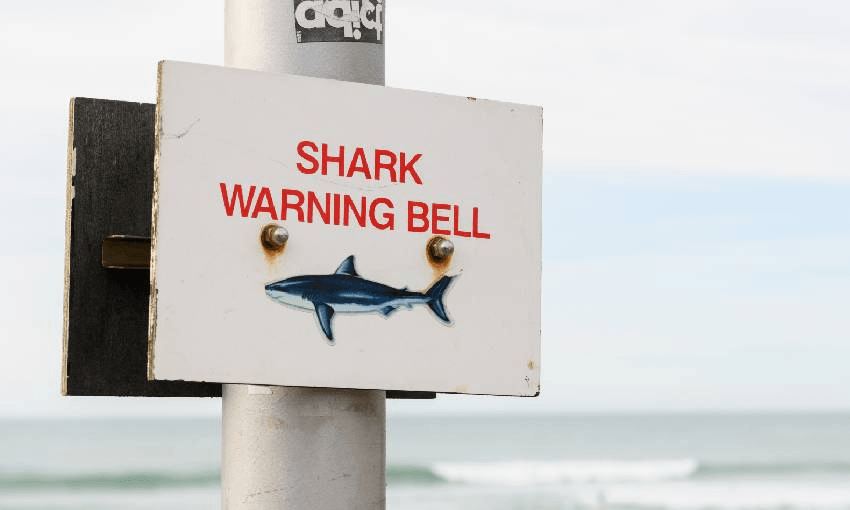Fishermen and swimmers around the Hauraki Gulf are reporting droves of baby sharks in the waters. What does it mean, and where are their parents?
Baby hammerheads were the most recognisable, but plenty of species were among the hundreds of chondrichthyan children hanging out at the marine crèche that popped up at Great Barrier Island this week.
The Hauraki Gulf is a favourite spot for breeding sharks, and the sheltered, shallow waters of our beaches are where the burgeoning young predators like to chill out and hide from danger.
The tiny Tryphena babes aren’t much danger to us now, but they will grow up. New Zealand is ranked fifth in the world for unprovoked shark attacks, and is home to around 70 species of shark including great whites, tiger sharks, mako sharks, and hammerheads.
Over 170 years, there have been 13 fatal shark attacks in New Zealand. Four of these attacks happened in Dunedin, where they’re rumoured to be the work of a great white serial killer: just one big hungry boy, trying to keep up his energy levels in the cold south.
For an animal that could kill us on a whim, this a really low number of attacks.
There are an average of six fatal shark attacks worldwide each year. For comparison: hippos kill about 500 people each year despite being vegetarians and restricted to only one continent. A hundred people are killed each year by pencils, making hanging out with a fan of The Dark Knight more dangerous than swimming in the sea.
Marine scientist and Discovery Channel presenter Riley “Shark Man” Elliot has spent plenty of time in the water with New Zealand’s toothiest residents. He said that if you’re out surfing this summer, that shadow you spot will probably be a bronze whaler shark.
“They’re the classic ones we see cruising the shoreline just behind the breakers. While people may see this as them ‘waiting to get us’, when you apply some biological understanding, it’s evident that they are just there because they are utilising the whitewater to increase oxygen uptake so that they don’t have to swim to breathe.”
What should you do if one’s getting a little close for comfort? “Calmly make your way out of the water, while keeping eye contact with the animal. Don’t panic and splash around, because that will only entice curiosity.”
He confirmed that the “punch them in the gills/nose” trick works. Sharks use their nose and mouth as hands – they’re very sensitive. “Imagine if you bit into something and it smacked you in the face,” explained Elliot. “You would get the hell out of there.”
So, yes: punching it in the gills or nose works, but anyone who spent their childhood afternoons running along the bottom of a swimming pool can testify that “underwater punching” is the world’s least effective martial art.
Fishermen are more likely than surfers to run into the big dogs, because they’re sharing turf. “The ocean is their supermarket,” said Elliot. That doesn’t mean sharks should be in ours. “If you catch a shark while fishing, cut the line as close to the hook as possible. Don’t worry, the hook will rust out quickly.”
Great whites are endangered, with fewer than 5000 east of Australia. They’re also a protected species in New Zealand waters – it’s illegal to capture or kill one. Should one wash up on the shore, it’s safest to drag it back into the water by its tail. Give it a little push forward to get some water through its gills, and it’ll be on its way.
There is a perception that more sharks are trawling New Zealand waters than in the past, but this likely isn’t true. “Warmer water likely means more people in the water, and thus increased observation of sharks that are there all the time anyway,” said Elliot. “So we need to be aware of human bias in our judgement of the natural world.”
However, he has noticed an increased presence of warm water species: adult hammerheads and mahi mahi fish in particular.
For those wondering where they’re most likely to run into a shark looking for human flesh, this map uses data dating back to the 19th century to show where shark attacks in New Zealand have happened, and whether they were provoked or not.
Recorded attacks on this site include several incidents where the sharks didn’t bite a person, they bumped them. This sounds cute, but remember that many sharks in our waters weigh over 100kg so a “bump” is like getting hit by a moped.

